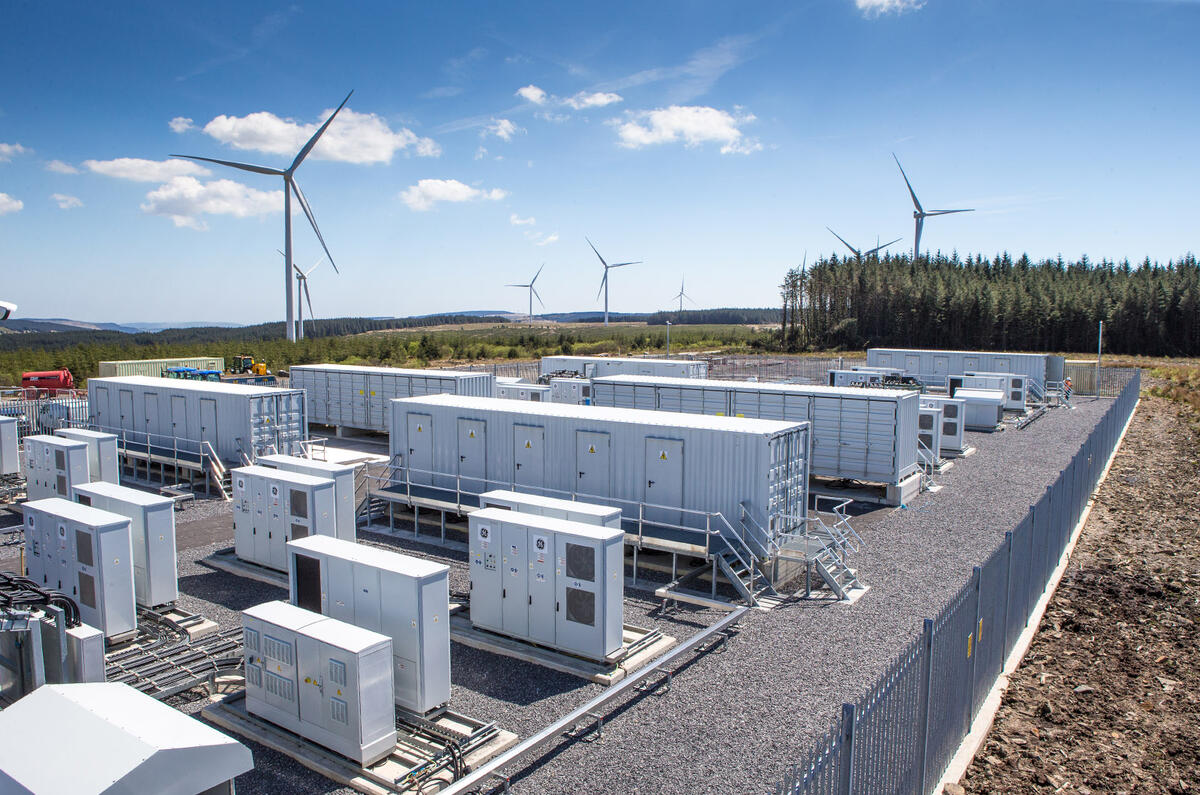A 22-megawatt storage facility has been put in place at the Pen y Cymoedd onshore wind farm in south Wales, comprising more than 500 BMW i3 battery packs.
The i3 packs, which have been only slightly modified for their use in the facility, are housed in six units. Pen y Cymoedd contains 76 turbines, with the potential to power more than 13% of homes in Wales annually, and was chosen for its existing grid connection - the infrastructure allowed the battery packs to be installed.
The company behind the facility, Swedish green energy firm Vattenfall, revealed that the storage plant is its largest, providing the National Grid with power in high-demand times to even out supply.
The National Grid has been criticised in recent months over fears that, as electric vehicle ownership picks up, local grids will not be able to keep up with the demand of multiple EV owners charging their cars simultaneously.
Systems such as the new storage facility could help to quell this risk, as well as allowing equivalent emissions of electric vehicles to fall further as the proportion of UK energy generated from renewable sources continues to grow. In mid-2017, equivalent emissions for EVs had fallen by 10% over 2016 and is only a third of those from five years before.
Vattenfall’s senior vice-president of wind, Gunnar Groebler, said: “Vattenfall is on the road to a smart, digitalised future, free from fossil fuels. I can think of few other energy installations that better demonstrate what that future looks like than this battery installation.”
Claus Wattendrup, head of solar and batteries at Vattenfall believes that storage and generation facilities such as the one now in Pen y Cymoedd are a growing phenomenon. "The UK is an island with a higher need for grid stabilisation than the continent, so we expect more projects like this in the future. The project is important, as it contrubites to the integration of fluctuating renewables.”
BMW i3 batteries were used as the company has a working relationship with the supplier and has had promising results using the batteries before. Although recycled batteries could be and have been used before, explained Wattendrup, the supply is limited when compared with the number required for these installations, and mixing recycled and new batteries is "not advisable".
It’s the latest in a series of vehicle-based grid innovations, including Nissan’s vehicle-to-grid system, as well as Renault’s Powervault units that are made from recycled batteries previously used in the Zoe.
Read more:
Defra launches car-friendly extension to air quality plan
Renault to repurpose EV batteries into home energy storage systems
EV CO2 emissions fall to record low through green energy sources
Nissan and UK government lead UK’s biggest vehicle-to-grid project




Join the debate
Add your comment
"Swedish green energy firm Vattenfall" ...LOL
"Swedish green energy firm Vattenfall"... You got to be kidding, right? Vattenfall is far from green! Did You get paid by Vattenfall to sneak that in? I can't even believe I am reading this absurdity. Please Mr. Beckwith, rewrite that paragraph, because it is so not true and an insult to Your readers.
What about......?
Is it environmentally safe....?, if it is it might be good for recharging points for future EV Cars?
Wind power in the EU
2017 showed that the 2nd highest method of production was Wind Power. Not bad as it's come from next to nothing to what it is now in just 20 years.
In Demark 44% of it's power comes from wind, Germany 20%. Wind energy now accounts for 18% of EU’s total installed power generation capacity, therefore 1 in 5 EV's are FUELED by the wind so to speak.
From the above you can see where it's going.
(Source WindEurope)